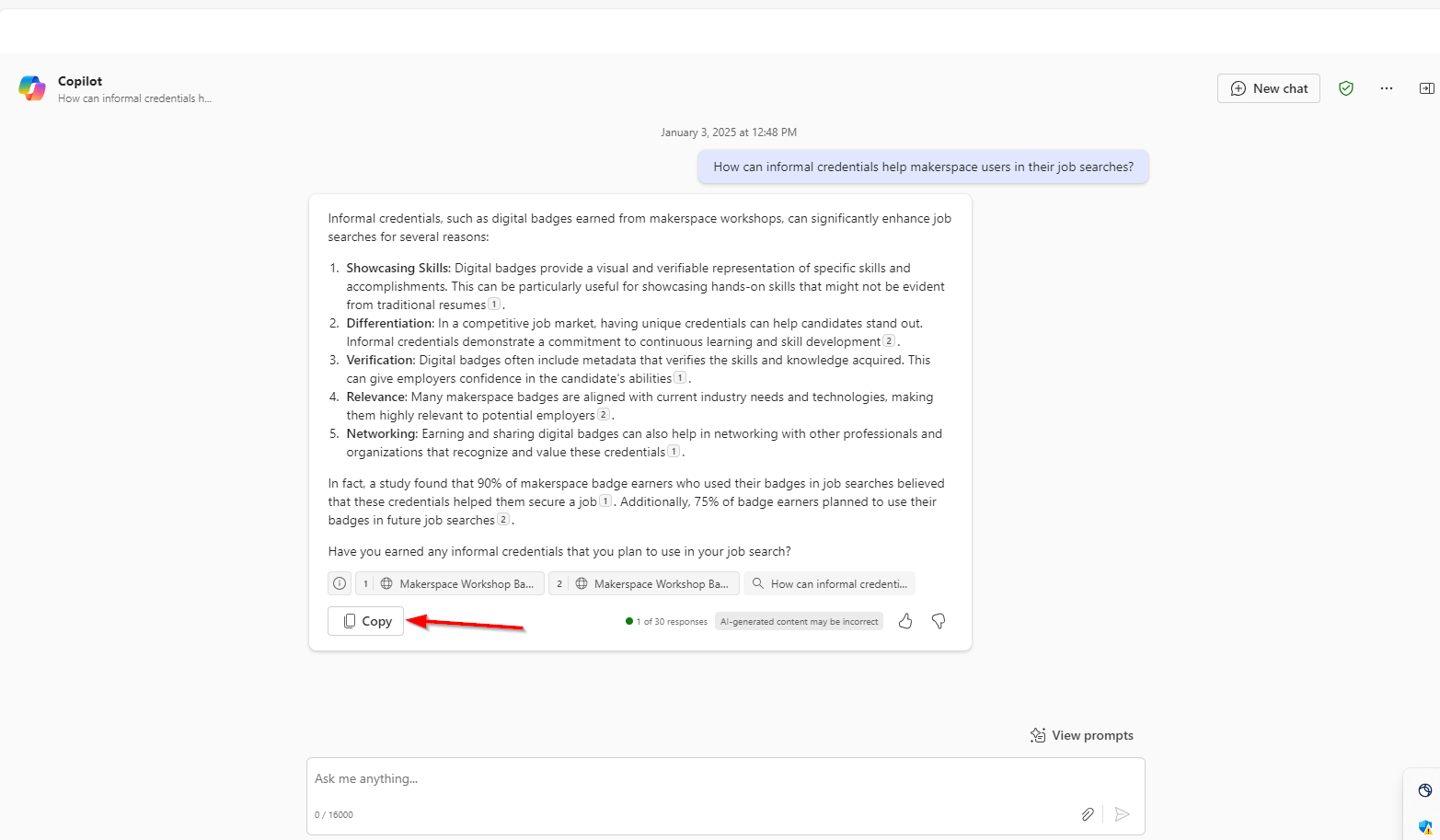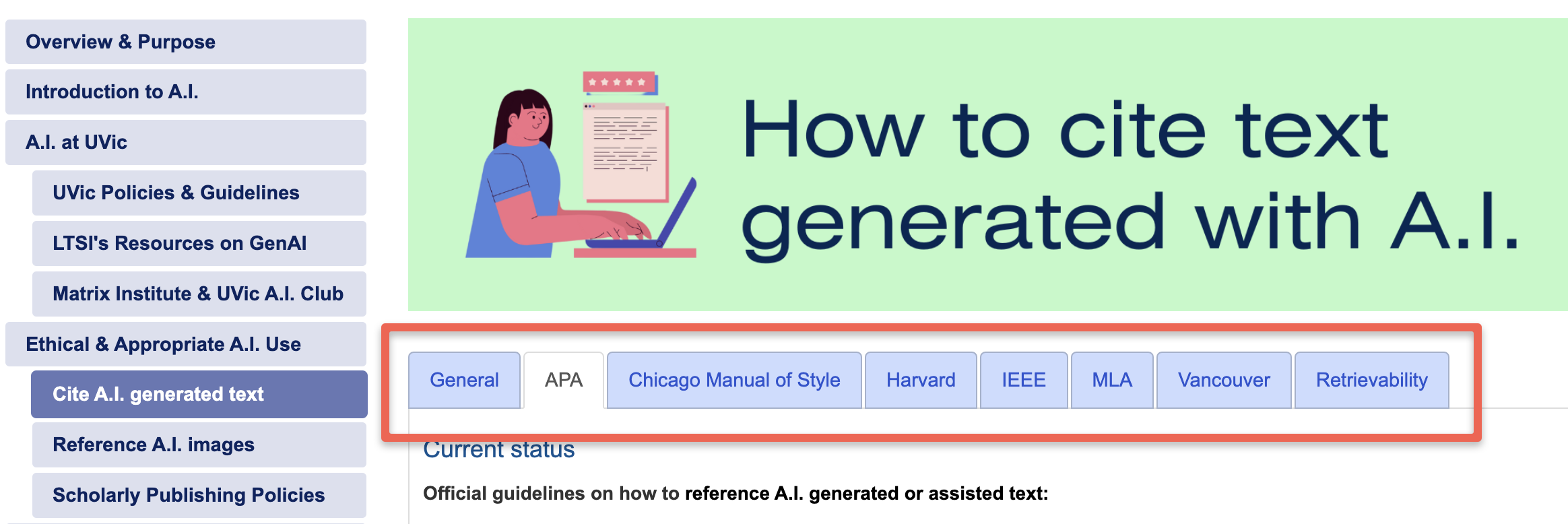
Cite All GenAI Outputs & Assistance Properly
If you have any questions or get stuck as you work through this in-class GenAI exercise, please ask the instructor for assistance. Have fun!
The source for this activity is the UVIc Libraries, citing AI tools guide.
Check with your instructor before using A.I. in any of your assignments.
If your instructor allows the use of ChatGPT or other A.I. tools for class work, you should
- Disclose any use of A.I. technology in your work.
- Cite any content of any kind that was generated with the help of an A.I. tool – no matter if you paraphrase it, quote it, or incorporate it into your own work.
- Identify how you used it, and also identify the specific tool(s) you used.
Please also consult UVic’s resources on academic integrity and Position Statement on GenAI for fundamental information on this general subject, as well as the Libraries’ recently updated resources around citation help for an overview on that subject.
Personal communication
In the interim, most authorities on citation styles who have not yet published concrete guidelines are recommending that we treat generative AI text the same way we would treat personal communications, like verbal or email conversations. Why? Because most textual content created by GenAI tools is currently non-retrievable by anyone other than the person that originally asked for the generated content, and is only accessible by the login credentials of that user. Exception: In their interim advice, APA acknowledges that there might be ways to retrieve such content, and hence offers an alternative approach to citing A.I. text. → See APA tab for more details.
Prompts
Even if the guide you are using does not require it, we recommend that you reference the prompt that helped create the text you are citing as well as the full output from the GenAI tool. This can be considered good practice because it increases transparency about how you arrived at the text you are citing and because it can contribute to a better understanding of these rapidly evolving tools.
Let’s Practice!
Create a citation for Following a prompt in your GenAI tool and then go through the process so that you could cite it properly if necessary.
- Put a prompt into your GenAI tool. For example:
How can informal credentials help makerspace users in their job searches? - In CoPilot, save a transcript of your response by clicking on the copy button. Note you must copy the prompts seperately to track prompts as well and then format it in a document.

- Include the chat transcript as an appendix to your work
- Add the date of your transcript to a Word or Google Document
- Acknowledge how you used the tool (even if you only use GenAI to help you brainstorm or conduct a literature review, and you don’t include any of its generated content)
- E.g. “I conducted the literature review for this assignment with the assistance of [ProductName, Version, from CompanyName, Year].”
- Follow along with the UVic Libraries How to cite text generated with A.I. instructions with the style guide of your choice.

Resources and further reading
- In-Text Citations: Personal Communications (APA Style Guide, Style and Grammar Guidelines, 2022, July)
- How to cite a work with a nonrecoverable source (A. Adams, APA Style Guide Blog, 2022, March 16)
- How do I cite an artificial intelligence? (MLA Style Center, 2019, February 6)
- ChatGPT Citations - Formats & Examples (Jack Caulfield, Scribbr.com, 2023, February 17)
- How do you recommend citing content developed or generated by artificial intelligence, such as ChatGPT? (The Chicago Manual of Style Online, 2023, March 7)
- Why you can’t cite ChatGPT (Thomas Basbøll, Inframethodology Blog, 2023, March 8)